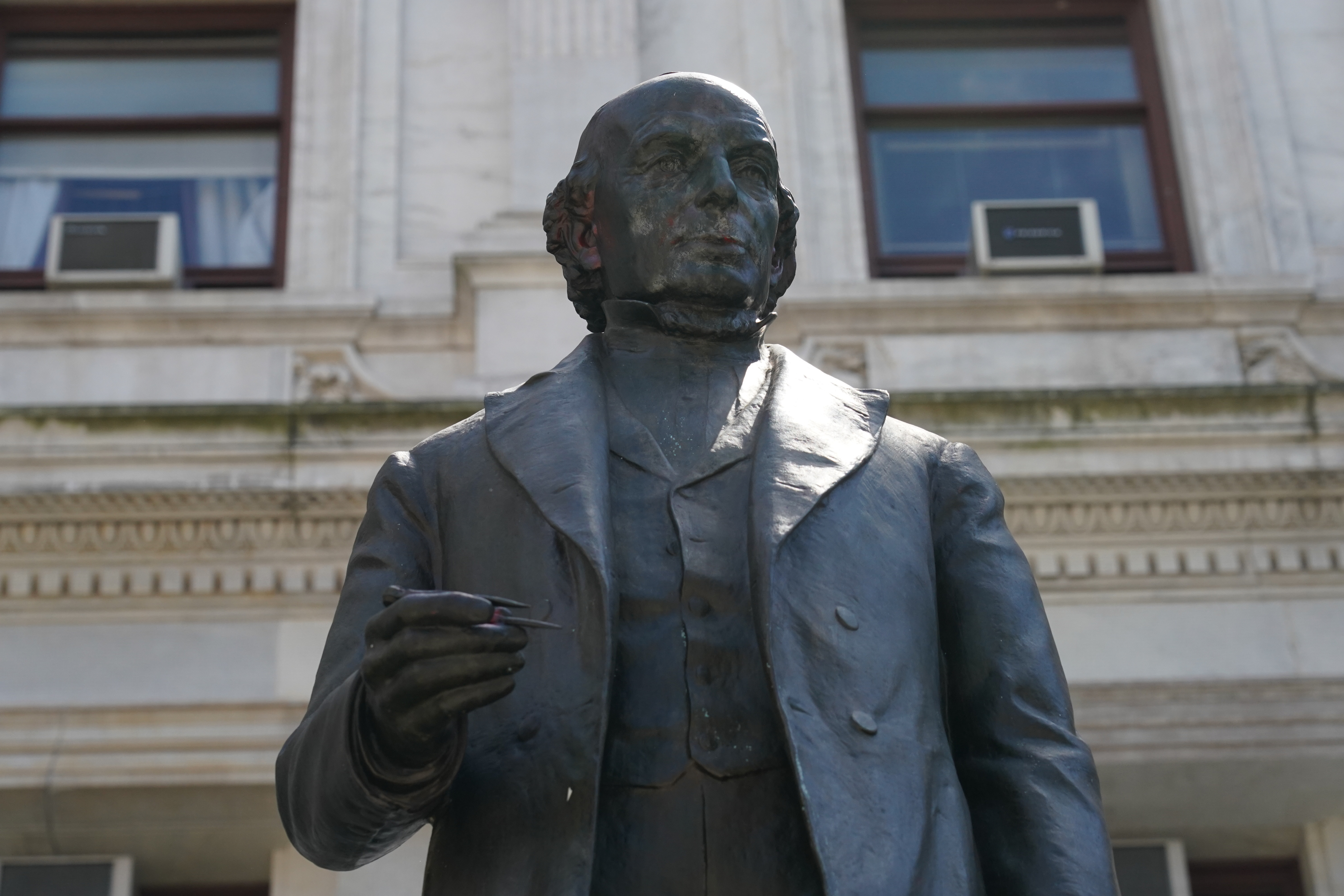Statue Limitations
Before peaceful protesters are permitted to pull down their next historical statue or spray paint a monument, they should be asked one question: Have you heard of Shelby Foote? Our guess is that few, if any of the people who want to rid us of unpleasant Civil War memories know the name of the man who spent 20 years writing an enormous three-volume history of that great conflict. If they have heard of him, and especially if they had read his work, they would understand the modern interpretation of the Civil War legacy does not jive with the reality of the times.
Current politicians and writers, including some who should know better, insist on using the word "traitors" to describe Southern soldiers. But that was not the word used at the time. They were called Rebels.
Foote's account of the war is based largely on what motivated the people who fought it. Despite his work, he was little known until he became the star of Ken Burns' television specials on the war. Many more people saw those films than will ever read the books. In one of his TV interviews, Foote drew a distinction between the economic cause of the war, which was obviously slavery, and the reason men fought it. They were not considered traitors so much as loyalists to their home states. It is revealing that these "traitors" were not sent to prison. Only a few Confederate leaders, including Jefferson Davis, went to prison and none for very long after it was determined that had not committed a crime.
"The average soldier on either side didn't give a damn about slavery," Foote said. He added that the southern men thought they were fighting the second war of independence; northerners fought to preserve the union. Even southerners who opposed slavery fought for the rights of their states to self determination. Most respected historians agree.
The South did not rebel. It seceded, forming a new country. There was nothing in the constitution to deal with it. From the beginning of the union, there was an ongoing argument over who had sovereignty - the federal government or the individual states. In some respects, that debate survives to this day.
It is fallacious to judge 19th century attitudes by revisionist 21st century standards. Nobody thought the war would be as long and bloody as it turned out, and men were under pressure from families and friends to fight for their states. Most common soldiers, north and south, were not moved by idelogy. They joined out of regional loyalty and the lure of adventure.
Take the case of Irish soldiers, who fought in great numbers. Some 160,000 were in the Union army. Two of them were my great grandmother's brothers, John and James Gallagher. Like most of the Irish, they were recent immigrants who fled the great famine, in their case to Pennsylvania's Lehigh Valley. Both died in the war, but they did not die to end slavery any more than southern boys died to preserve it. The evidence for that is clear. There were far fewer Irish immigrants in the south, mostly in Charleston, New Orleans and other coastal communities, but as many as 40,000 of them wore gray (if they had uniforms at all). Most recent immigrants came from the same backgrounds as northern Irish, and shared the Catholic faith and heritage, but few of them felt a moral obligation to move north to preserve the Union and abolish slavery. That was not even a goal of the Union until Lincoln's emancipation proclamation of 1863.
It is revealing that almost at the same time as the proclamation, Irish rioted in New York City. They were disheartened by the terrible casualties the famed Irish Brigade had taken in the recent battles of Fredericksburg and Gettysburg, and resented the new draft being imposed in the north, a draft that wealthy men could avoid by paying for a substitute. Rather than opposing slavery, they actually resented the freed blacks who competed with them for low paying jobs. What began as a protest against the draft quickly became a race riot, requiring federal forces to be sent to break it up. The violence resulted in 120 deaths, including 11 blacks brutally lynched, and white women who consorted with blacks assaulted. It forced half of the blacks in Manhattan to flee the borough for Brooklyn. There was even talk of Manhattan seceding from the state government in Albany.
That was the history that is being forgotten today by those making a federal case of monuments. Of all the targets of the cancel Confederate symbols movement, the Confederate battle flag is one that makes sense, only because it has been adopted by the redneck culture that embraces racism.
The argument that statues and names of Confederate leaders at various sites were designed to preserve the memory of slavery is a dubious claim. So what if squares in Southern towns featured generic statues of Confederate soldiers, that rather than being works of art, as a recent writer noted, were mass produced like fire hydrants in a northern factory. Most of those monuments went up between 1890 and 1920, the same time frame that monuments appeared in northern cities. The veterans on both sides were aging, and as still happens today with respect to World War Two, Korea and Vietnam, there was a sense of honoring their friends who had undergone the ordeal of battle.
Those who understand this best were often the officers who led both armies. Many had served together before the war and remained friends after it. Union General Grant and Confederate James Longstreet were such friends. Even though Longstreet realized the evil of slavery, he still felt duty bound to fight for his native state. After the war he supported then President Grant in the efforts of reconstruction, a stance that made some southerners regard him as a traitor and tarnished his distinguished military reputation. On the flip side, Virginian George Thomas stayed with the Union and was one of its better generals. But after the war, he was shunned by his own family.
The monument removal craze has reached extremes with attacks on the memory of Christopher Columbus and Father Junipero Serra, the latter the builder of California missions, a number of which today are major cities. Apparently neither man had an unblemished civil rights record. Perhaps the most egregious defacing was a statue of Matthias Baldwin which stands outside Philadelphia's city hall. Protesters could not find many Confederate memorials to damage in that city so some went after Baldwin. He happened to be the man who founded what was once the country's largest steam locomotive manufacturer, whose machines helped win the Civil War. He was a noted opponent of slavery; in fact he made a point of integrating his extensive work force. So much for the historical knowledge of protesters.

Copyright: © Philadelphia Inquirer)
Perhaps the final say on this issue was already said by Abraham Lincoln. He understood the reality of his times. In his two great speeches, first at Gettysburg and later his Second Inaugural Address, when he referenced the sacrifice of soldiers, he did not take sides. He did not exclude Southerners from "the brave men, living and dead, who struggled here" at Gettysburg, and when he spoke at the war's end of caring "for those who have borne the battle, and for his widow and his orphan," he did not add - except for Confederate traitors.
So, protesters, remove statues if you must, but please leave the iron frame of history standing.

Thanks Bernie
This Comment had been Posted by Robert Hone
Outstanding analysis.